MaryAnn Bernal's Blog, page 200
January 31, 2015
History Trivia - Gunpowder Plotters hanged, drawn and quartered at Westminster.
January 31
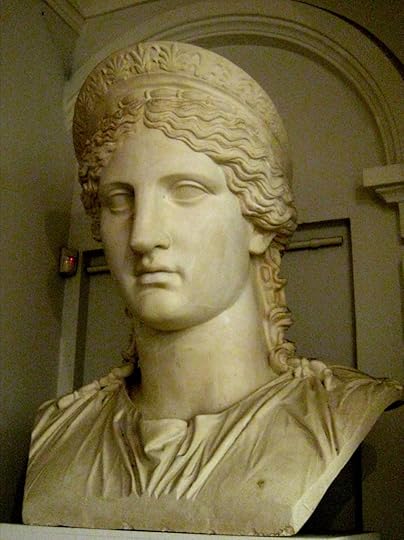 36 BC Antonia Minor, daughter of Mark Antony and Octavia Minor was born.
36 BC Antonia Minor, daughter of Mark Antony and Octavia Minor was born. 314 Silvester I began his reign as Pope of the Catholic Church, succeeding Pope Miltiades. During his pontificate, the Basilica of St. John Lateran, Santa Croce in Gerusalemme, St. Peter's Basilica, and several cemeterial churches over the graves of martyrs were founded.
314 Silvester I began his reign as Pope of the Catholic Church, succeeding Pope Miltiades. During his pontificate, the Basilica of St. John Lateran, Santa Croce in Gerusalemme, St. Peter's Basilica, and several cemeterial churches over the graves of martyrs were founded.
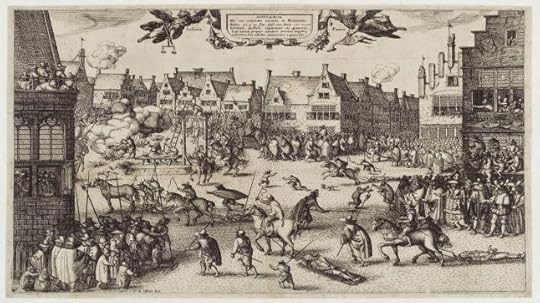 1606 Gunpowder Plot: Guy Fawkes was executed for his plotting against Parliament and James I of England. Guy Fawkes and fellow surviving Gunpowder Plotters were hanged, drawn and quartered at Westminster.
1606 Gunpowder Plot: Guy Fawkes was executed for his plotting against Parliament and James I of England. Guy Fawkes and fellow surviving Gunpowder Plotters were hanged, drawn and quartered at Westminster.
Published on January 31, 2015 03:00
January 30, 2015
History Trivia - King Charles I of England beheaded
January 30

1487 Bell chimes were invented.

1648 Eighty Years' War: The Treaty of Münster and Osnabrück was signed, which ended the conflict between the Netherlands and Spain.

1649 King Charles I of England was beheaded.

1661 Oliver Cromwell, Lord Protector of the Commonwealth of England was ritually executed two years after his death, on the anniversary of the execution of the monarch he himself deposed.

1487 Bell chimes were invented.

1648 Eighty Years' War: The Treaty of Münster and Osnabrück was signed, which ended the conflict between the Netherlands and Spain.

1649 King Charles I of England was beheaded.

1661 Oliver Cromwell, Lord Protector of the Commonwealth of England was ritually executed two years after his death, on the anniversary of the execution of the monarch he himself deposed.
Published on January 30, 2015 02:30
January 29, 2015
Diane Turner - London Rocks - 29-01-2015
Published on January 29, 2015 08:19
Ancient partial skull from Israeli cave linked to migration of humans from Africa to Europe
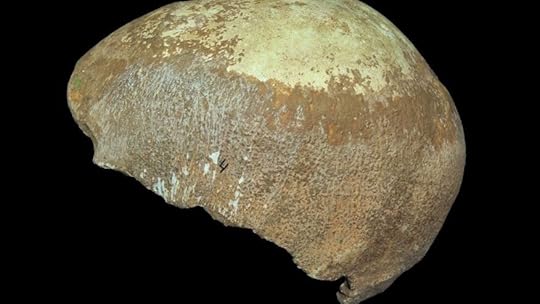 This undated photo provided by the Israel Antiquities Authority on Tuesday, Jan. 27, 2015 shows a partial human skull excavated from a cave in Israel's western Galilee region. (AP Photo/Israel Antiquities Authority, Clara Amit)
This undated photo provided by the Israel Antiquities Authority on Tuesday, Jan. 27, 2015 shows a partial human skull excavated from a cave in Israel's western Galilee region. (AP Photo/Israel Antiquities Authority, Clara Amit)NEW YORK – Long ago, humans left their evolutionary cradle in Africa and passed through the Middle East on their way to Europe. Now scientists have found the first fossil remains that appear to document that journey, a partial skull from an Israeli cave.
The skull dates from around 55,000 years ago, fitting into the period when scientists had thought the migrants inhabited the area. And details of its anatomy resemble ancient skulls from Europe, Israel Hershkovitz of Tel Aviv University in Israel wrote in an email.
He and others present the finding in a paper released Wednesday by the journal Nature. The skull, which lacks facial features and its base, was found in Manot Cave in the Galilee region of northern Israel.The migrants are called modern humans because of their anatomy. The earliest remains of modern humans in Europe date to about 45,000 years ago.
Experts not connected with the work were impressed. "This is the first evidence we have of the humans who made this journey," apart from some ancient tools, said Eric Delson of Lehman College and the American Museum of Natural History in New York.
Although finding a fossil that fits so well with what was believed about the ancient migration might be expected, "we didn't have it before," he said.
"We could predict theoretically what we would find. They've found it. ... Up until now, that was a ghost."
Katerina Harvati of the University of Tuebingin in Germany said the skull gives clues about the anatomy of the migrants. Since Neanderthals were already known to inhabit the area, the skull also documents that they and modern humans co-existed there, as suspected, Harvati said.
That supports the idea that Neanderthals and modern humans interbred there, experts said. Chris Stringer of the Natural History Museum in London wrote in an email that the skull is the first fossil of a modern human from western Asia that is well-dated to the estimated time of the interbreeding, some 50,000 to 60,000 years ago.
Fox News
Published on January 29, 2015 06:34
History Trivia - Galileo observes Neptune
January 29

1119 Pope Gelasius II died. The brief reign of Gelasius II was plagued by the lingering investiture controversy and the aggressive actions of Henry V, Holy Roman Emperor. Henry took possession of Rome and twice drove the pope from the city, installing in his place the antipope Gregory VIII.
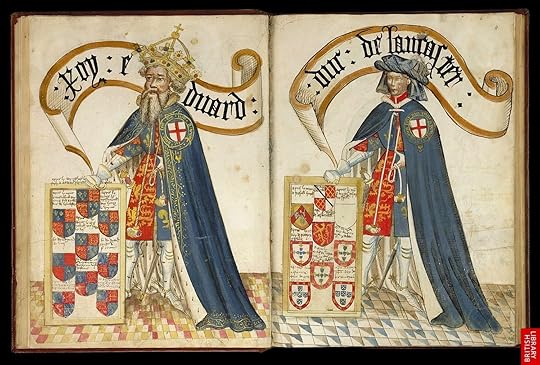
1327 Edward III was crowned By laying claim to the French throne, he started the Hundred Years' War. He also created Britain's highest knightly order, the Order of the Garter because of his fondness for chivalry.

1595 William Shakespeare's play Romeo and Juliet was performed for the first time on this day.

1613 Galileo observed Neptune but failed to understand the significance of his find.

1119 Pope Gelasius II died. The brief reign of Gelasius II was plagued by the lingering investiture controversy and the aggressive actions of Henry V, Holy Roman Emperor. Henry took possession of Rome and twice drove the pope from the city, installing in his place the antipope Gregory VIII.

1327 Edward III was crowned By laying claim to the French throne, he started the Hundred Years' War. He also created Britain's highest knightly order, the Order of the Garter because of his fondness for chivalry.

1595 William Shakespeare's play Romeo and Juliet was performed for the first time on this day.

1613 Galileo observed Neptune but failed to understand the significance of his find.
Published on January 29, 2015 03:00
January 28, 2015
New website features objects recovered from the Battle of Waterloo
 Depiction of the Duke of Wellington ordering the British line to advance at the Battle of Waterloo in 1815. Photograph: North Wind Picture Archives/Alamy
Depiction of the Duke of Wellington ordering the British line to advance at the Battle of Waterloo in 1815. Photograph: North Wind Picture Archives/Alamy Maev Kennedy
The Guardian
Objects associated with the Battle of Waterloo including Napoleon’s Arab travelling cloak, Wellington’s boots, a blood-stained amputation saw, a French breast plate with the hole left by the shot that killed its owner, and a vertebra from a British soldier taken from the battlefield and brought back as a gruesome souvenir – or to his wife – feature on a website launching on Wednesday.
The site, Waterloo200.org, features 100 objects from the National Army Museum, the Royal Collection and other museum and private collections, and 100 more will be added before the actual anniversary on 18 June. It also covers hundreds of national and community events and projects. Events include a 200-mile bike ride from the site of Waterloo in Belgium to London, joined by injured service personnel and members of the British and Irish Lions.
The battle was regarded as an epic victory for Wellington and the allies and marked the final defeat of Napoleon, but saw 65,000 casualties of the 200,000 who fought, with many of the dead lying on the battlefield for days, plundered by souvenir hunters, including those who took teeth to be sold to dentists. A set of “Waterloo teeth” also features on the site.
Published on January 28, 2015 07:12
1st Americans Used Spear-Throwers to Hunt Large Animals
by Joseph Castro
Live Science
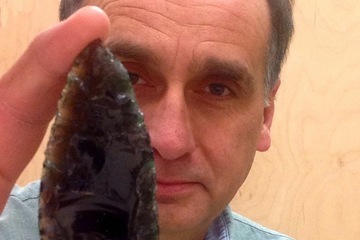
 Karl Hutchings, an archaeologist at Thompson Rivers University in Canada, holds a Clovis spear point.
Karl Hutchings, an archaeologist at Thompson Rivers University in Canada, holds a Clovis spear point.
Credit: Karl HutchingsDespite a lack of archaeological evidence, the first North Americans have often been depicted hunting with spear-throwers, which are tools that can launch deadly spear points at high speeds. But now, a new analysis of microscopic fractures on Paleo-Indian spear points provides the first empirical evidence that America's first hunters really did use these weapons to tackle mammoths and other big game.
The new study has implications for scientists' understanding of the way Paleo-Indians lived, researchers say.
To understand the inner workings of extinct hunter-gatherer societies, it's important to first learn how the ancient peoples got the food they ate, because their lives were closely tied to their subsistence activities. Current models of Paleo-Indian society are based on the assumption that hunters sometimes used spear-throwers, or atlatls, said study author Karl Hutchings, an archaeologist at Thompson Rivers University in Canada. [In Photos: The Clovis Culture & Stone Tools]
"We can now be assured that those assumptions were right," Hutchings told Live Science.
Ancient hunting tools
Similar to bows, atlatls can propel flexible, pointed shafts — called darts, rather than arrows — at high speeds across long distances. Essentially, they were sticklike tools that contained a hook or spur at one end to hold a dart. By swinging the spear-thrower overhead and forward, hunters could launch their darts with greater force than if they were to throw them like javelins.
Archaeological evidence indicates that hunter-gathers in the Old World used atlatls beginning at least 18,000 years ago. Researchers have long thought that Paleo-Indians — including the people of the Clovis culture, who lived around 13,000 years ago and are considered one of the first American peoples — also hunted with spear-throwers.
Researchers reasoned that "if the spear-thrower originated in the Old World, then it only made sense that it must have shown up with early [North American] colonists," Hutchings said. Additionally, Paleo-Indians were thought to have hunted big animals, such as mammoths and ground sloths, which would have required powerful, long-distance weapons to take the animals down safely. "People started wondering just how crazy you would have to be to run up to these things with just a sharp, broken rock tied to a stick."
But archeological evidence of Paleo-Indian atlatls and darts is lacking because these tools were often made of wood, which doesn't preserve well — the only part of the weapons left in the archaeological record are the stone points, which could have also been used in other types of weapons, such as spears, Hutchings said. In comparison, ancient spear-throwers from Europe were often made of ivory or bone.
The earliest known evidence of Paleo-Indian spear-throwers comes from 11,000-year-old "bannerstones," which are stone objects that may have functioned as atlatl weights, though the true function of bannerstones is debated, Hutchings said. [Top 10 Mysteries of the 1st Humans]
The earliest solid evidence of atlatls in the New World, then, are 9,000- to 10,000-year-old spear-thrower hooks from Warm Mineral Springs, a sinkhole in Florida. However, these tools date back to the Early Archaic subperiod, which came after the Paleo-Indian period.
Telltale fractures
To see if the earliest North Americans — including people from the Clovis culture, Folsom culture (10,000 to 11,000 years ago) and other Paleo-Indians — used atlatls, Hutchings analyzed the fractures present in hundreds of spear points. He looked for clues that the weapon tips experienced high-velocity, mechanically propelled impacts.
If a spear point hits a target hard enough, the energy of the impact will cause the tip to break. "When it breaks, it sends a shock wave through the stone that produces fractures, which are related to the amount and kind of force involved," Hutchings said.
By measuring topographic features on the fracture surface, you can calculate the "fracture velocity" of the impact, or how quickly the fractures spread through the material, Hutchings explained. Because different weapons — spears, javelins, atlatls or bows — produce specific fracture velocities and related forces, you can work backward from a fracture to determine what caused it.
Using this method, which he developed in the late 1990s, Hutchings determined the fracture velocities for 55 out of 668 Paleo-Indian artifacts that he examined. Of these points, about half of them exhibited fracture velocities that can only be achieved using an atlatl and dart or a bow and arrow.
Because Paleo-Indians aren't thought to have had bows and arrows or other propulsive weapons, the findings suggest that they most likely used atlatls to launch their spear points, Hutchings said.
Importantly, the method may also help scientists better understand ancient projectile technologies, by allowing them to trace the origin of the technologies and how they were used across societies and continents. "We can get a better resolution of when these technologies occurred, how they spread and why they spread," Hutchings said.
Hutchings detailed his findings in the March issue of the Journal of Archaeological Science.
Live Science

 Karl Hutchings, an archaeologist at Thompson Rivers University in Canada, holds a Clovis spear point.
Karl Hutchings, an archaeologist at Thompson Rivers University in Canada, holds a Clovis spear point.Credit: Karl HutchingsDespite a lack of archaeological evidence, the first North Americans have often been depicted hunting with spear-throwers, which are tools that can launch deadly spear points at high speeds. But now, a new analysis of microscopic fractures on Paleo-Indian spear points provides the first empirical evidence that America's first hunters really did use these weapons to tackle mammoths and other big game.
The new study has implications for scientists' understanding of the way Paleo-Indians lived, researchers say.
To understand the inner workings of extinct hunter-gatherer societies, it's important to first learn how the ancient peoples got the food they ate, because their lives were closely tied to their subsistence activities. Current models of Paleo-Indian society are based on the assumption that hunters sometimes used spear-throwers, or atlatls, said study author Karl Hutchings, an archaeologist at Thompson Rivers University in Canada. [In Photos: The Clovis Culture & Stone Tools]
"We can now be assured that those assumptions were right," Hutchings told Live Science.
Ancient hunting tools
Similar to bows, atlatls can propel flexible, pointed shafts — called darts, rather than arrows — at high speeds across long distances. Essentially, they were sticklike tools that contained a hook or spur at one end to hold a dart. By swinging the spear-thrower overhead and forward, hunters could launch their darts with greater force than if they were to throw them like javelins.
Archaeological evidence indicates that hunter-gathers in the Old World used atlatls beginning at least 18,000 years ago. Researchers have long thought that Paleo-Indians — including the people of the Clovis culture, who lived around 13,000 years ago and are considered one of the first American peoples — also hunted with spear-throwers.
Researchers reasoned that "if the spear-thrower originated in the Old World, then it only made sense that it must have shown up with early [North American] colonists," Hutchings said. Additionally, Paleo-Indians were thought to have hunted big animals, such as mammoths and ground sloths, which would have required powerful, long-distance weapons to take the animals down safely. "People started wondering just how crazy you would have to be to run up to these things with just a sharp, broken rock tied to a stick."
But archeological evidence of Paleo-Indian atlatls and darts is lacking because these tools were often made of wood, which doesn't preserve well — the only part of the weapons left in the archaeological record are the stone points, which could have also been used in other types of weapons, such as spears, Hutchings said. In comparison, ancient spear-throwers from Europe were often made of ivory or bone.
The earliest known evidence of Paleo-Indian spear-throwers comes from 11,000-year-old "bannerstones," which are stone objects that may have functioned as atlatl weights, though the true function of bannerstones is debated, Hutchings said. [Top 10 Mysteries of the 1st Humans]
The earliest solid evidence of atlatls in the New World, then, are 9,000- to 10,000-year-old spear-thrower hooks from Warm Mineral Springs, a sinkhole in Florida. However, these tools date back to the Early Archaic subperiod, which came after the Paleo-Indian period.
Telltale fractures
To see if the earliest North Americans — including people from the Clovis culture, Folsom culture (10,000 to 11,000 years ago) and other Paleo-Indians — used atlatls, Hutchings analyzed the fractures present in hundreds of spear points. He looked for clues that the weapon tips experienced high-velocity, mechanically propelled impacts.
If a spear point hits a target hard enough, the energy of the impact will cause the tip to break. "When it breaks, it sends a shock wave through the stone that produces fractures, which are related to the amount and kind of force involved," Hutchings said.
By measuring topographic features on the fracture surface, you can calculate the "fracture velocity" of the impact, or how quickly the fractures spread through the material, Hutchings explained. Because different weapons — spears, javelins, atlatls or bows — produce specific fracture velocities and related forces, you can work backward from a fracture to determine what caused it.
Using this method, which he developed in the late 1990s, Hutchings determined the fracture velocities for 55 out of 668 Paleo-Indian artifacts that he examined. Of these points, about half of them exhibited fracture velocities that can only be achieved using an atlatl and dart or a bow and arrow.
Because Paleo-Indians aren't thought to have had bows and arrows or other propulsive weapons, the findings suggest that they most likely used atlatls to launch their spear points, Hutchings said.
Importantly, the method may also help scientists better understand ancient projectile technologies, by allowing them to trace the origin of the technologies and how they were used across societies and continents. "We can get a better resolution of when these technologies occurred, how they spread and why they spread," Hutchings said.
Hutchings detailed his findings in the March issue of the Journal of Archaeological Science.
Published on January 28, 2015 07:06
New Tattoos Found on Oetzi the Iceman
by Rossella Lorenzi
Discovery News

New scans have revealed a total of 61 tattoos on the 5,300-year-old mummified body of Ötzi the Iceman, reigniting the debate on whether the inkings were a form of acupuncture that predates the first recorded use of the practice in China by 2,000 years.
A number of tattoos were noticed on the Iceman ever since his discovery in 1991 in a melting glacier in the Ötztal Alps (hence the name). However, the markings, produced by fine incisions into which charcoal was rubbed, were not easily identifiable because of the dark color of the mummy’s skin.
To accurately determine the exact number and location of the tattoos on the Iceman's body, Marco Samadelli and colleagues from the South Tyrol Museum of Archaeology in Italy used innovative non-invasive multispectral photographic imaging techniques able to capture a range of wavelengths, from IR to UV.
Iceman Mummy 20 Yrs On: Mysteries Remain
The researchers slightly thawed the body in order to eliminate the ice layer wrapping the surface of the Iceman and photographed the body systematically from all directions.
"By covering a range including non-visible and visible light, all possible tattoos could be detected," Samadelli and colleagues wrote in the Journal of Cultural Heritage.
It emerged the mummified body was marked with 61 tattoos divided into 19 groups across various body parts.
"It is an extraordinary result. Finally, we have been able to clarify many doubts on the existence of these tattoos," Samadelli told Discovery News.
The Iceman Suffered Brain Damage Before Death
The majority consisted of linear markings running parallel to each other, between 2 mm (0.07 inches) and 8 mm (0.3 inches) apart. The marks were between 1 mm (0.03 inches) and 3 mm (0.1 inches) thick and between 7 mm (0.2 inches) and 40 mm (1.5 inches) long.
In two locations, on the knee of the right leg and on the ankle of the left foot, the lines formed a perpendicular cross.
The highest concentration of drawings was found in the lower section of the legs, while the longest tattoos were detected around the wrist of the left hand. Visible tattoos, which have been documented before, lay on the back of the lumbar region.
The new imaging technique also allowed the researchers to detect a previously unrecognized group of tattoos.
"It is located in the right lower thoracic region, showing four parallel lines of length varying from 20 mm (0.7 inches) to 25 mm (0.9 inches)," Samadelli and colleagues explained.
"This is of particular interest, as this represents the first tattoo that was detected on the Iceman’s frontal part of the torso," they added.
It was previously believed the tattoos were made as a sort of treatment or diagnosis of health problems, in particular lower back pain and degenerative joint disease of his knees, ankle and wrist. Other studies associated the marking to a primitive form of acupuncture as they were mainly found along acupuncture meridians used to treat back pain.
The Iceman Could Have Used a Dentist
"The newly identified tattoo at the chest of the Iceman seems to contradict the theory, that they were related to lower back pain and degenerative joint diseases, as this mark is not located close to a joint," said the researchers.
However, they noted the Iceman also suffered from conditions that could have also caused pain in the chest area, such as gallbladder stones, worms in his colon, and atherosclerosis.
"Therefore, it cannot be ruled out that the Iceman's tattoos were indeed applied as a therapeutic treatment," they concluded.
Living Relatives of Iceman Mummy Found
Samadelli and colleagues now want to use the complete mapping of the Iceman's tattoos in new research into the possible reasons for their application, including their relation to acupuncture points.
"Future comparative studies based on the known health problems of the Iceman as evidenced by radiological investigations and molecular studies, could help to find out whether the tattoos had a therapeutic, diagnostic or more symbolic background," they wrote.
Discovery News

New scans have revealed a total of 61 tattoos on the 5,300-year-old mummified body of Ötzi the Iceman, reigniting the debate on whether the inkings were a form of acupuncture that predates the first recorded use of the practice in China by 2,000 years.
A number of tattoos were noticed on the Iceman ever since his discovery in 1991 in a melting glacier in the Ötztal Alps (hence the name). However, the markings, produced by fine incisions into which charcoal was rubbed, were not easily identifiable because of the dark color of the mummy’s skin.
To accurately determine the exact number and location of the tattoos on the Iceman's body, Marco Samadelli and colleagues from the South Tyrol Museum of Archaeology in Italy used innovative non-invasive multispectral photographic imaging techniques able to capture a range of wavelengths, from IR to UV.
Iceman Mummy 20 Yrs On: Mysteries Remain
The researchers slightly thawed the body in order to eliminate the ice layer wrapping the surface of the Iceman and photographed the body systematically from all directions.
"By covering a range including non-visible and visible light, all possible tattoos could be detected," Samadelli and colleagues wrote in the Journal of Cultural Heritage.
It emerged the mummified body was marked with 61 tattoos divided into 19 groups across various body parts.
"It is an extraordinary result. Finally, we have been able to clarify many doubts on the existence of these tattoos," Samadelli told Discovery News.
The Iceman Suffered Brain Damage Before Death
The majority consisted of linear markings running parallel to each other, between 2 mm (0.07 inches) and 8 mm (0.3 inches) apart. The marks were between 1 mm (0.03 inches) and 3 mm (0.1 inches) thick and between 7 mm (0.2 inches) and 40 mm (1.5 inches) long.
In two locations, on the knee of the right leg and on the ankle of the left foot, the lines formed a perpendicular cross.
The highest concentration of drawings was found in the lower section of the legs, while the longest tattoos were detected around the wrist of the left hand. Visible tattoos, which have been documented before, lay on the back of the lumbar region.
The new imaging technique also allowed the researchers to detect a previously unrecognized group of tattoos.
"It is located in the right lower thoracic region, showing four parallel lines of length varying from 20 mm (0.7 inches) to 25 mm (0.9 inches)," Samadelli and colleagues explained.
"This is of particular interest, as this represents the first tattoo that was detected on the Iceman’s frontal part of the torso," they added.
It was previously believed the tattoos were made as a sort of treatment or diagnosis of health problems, in particular lower back pain and degenerative joint disease of his knees, ankle and wrist. Other studies associated the marking to a primitive form of acupuncture as they were mainly found along acupuncture meridians used to treat back pain.
The Iceman Could Have Used a Dentist
"The newly identified tattoo at the chest of the Iceman seems to contradict the theory, that they were related to lower back pain and degenerative joint diseases, as this mark is not located close to a joint," said the researchers.
However, they noted the Iceman also suffered from conditions that could have also caused pain in the chest area, such as gallbladder stones, worms in his colon, and atherosclerosis.
"Therefore, it cannot be ruled out that the Iceman's tattoos were indeed applied as a therapeutic treatment," they concluded.
Living Relatives of Iceman Mummy Found
Samadelli and colleagues now want to use the complete mapping of the Iceman's tattoos in new research into the possible reasons for their application, including their relation to acupuncture points.
"Future comparative studies based on the known health problems of the Iceman as evidenced by radiological investigations and molecular studies, could help to find out whether the tattoos had a therapeutic, diagnostic or more symbolic background," they wrote.
Published on January 28, 2015 07:00
History Trivia - First Crusaders siege of Hosn-el-Akrad Syria
January 28

814 Charlemagne, King of the Franks and creator of the Holy Roman Empire, died in Aachen.

1099 First Crusaders began the siege of Hosn-el-Akrad Syria.

1262 Flemish/Dutch coast was ravaged by a north western storm.

1495 Pope Alexander VI gave his son Cesare Borgia as a hostage to Charles VIII of France to ensure the Pope's good behavior as Charles left Rome to conquer Naples. However, Cesare did escape and returned to Rome.
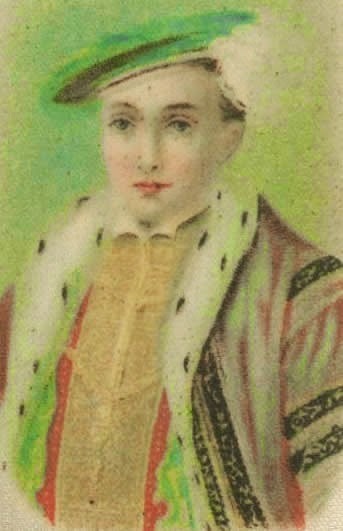
1547 Henry VIII died. His nine year old son, Edward VI became King, and the first Protestant ruler of England.

814 Charlemagne, King of the Franks and creator of the Holy Roman Empire, died in Aachen.

1099 First Crusaders began the siege of Hosn-el-Akrad Syria.

1262 Flemish/Dutch coast was ravaged by a north western storm.

1495 Pope Alexander VI gave his son Cesare Borgia as a hostage to Charles VIII of France to ensure the Pope's good behavior as Charles left Rome to conquer Naples. However, Cesare did escape and returned to Rome.

1547 Henry VIII died. His nine year old son, Edward VI became King, and the first Protestant ruler of England.
Published on January 28, 2015 03:00
January 27, 2015
Medieval Skulls Reveal Long-Term Risk of Brain Injuries
by Laura Geggel
Live Science
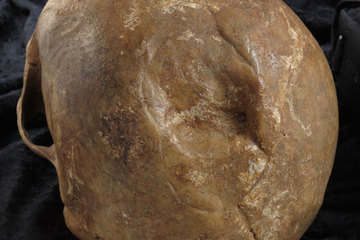
 The smooth edges of this skull fracture suggest that the injury healed after the skull's owner, a man buried in Odense, Denmark, was hurt.
The smooth edges of this skull fracture suggest that the injury healed after the skull's owner, a man buried in Odense, Denmark, was hurt.
Credit: Image courtesy of George R. Milner; collection, ADBOU University of Southern Denmark
Skull fractures can lead to an early death, even if the victims initially survived the injuries, according to a new study that looked at skulls from three Danish cemeteries with funeral plots dating from the 12th to the 17th centuries.
This is the first time that researchers have used historical skulls to estimate the risk of early death among men who survived skull fractures, experts said. The study showed that these men were 6.2 times more likely to die an early death compared with men living during that time without skull fractures. Today, the risk of dying after getting a traumatic brain injury is about half that, likely because of improvements in modern medicine and social support, according to the researchers.
"Their treatment then would have been pretty much go home, lie down and hope for the best," said study researcher George Milner, a professor of anthropology at Pennsylvania State University. "There was very little that could be done at that time." [Inside the Brain: A Photo Journey Through Time]
Often, epidemiology — the study of disease incidence and prevalence among large populations — is confined to living samples. But the researchers suggest that skull fractures, much like high blood pressure or cholesterol in present-day patients, can be used in historic samples as markers for an increased risk of getting sick or dying.
"What we want to do is to be able to obtain figures or statistics that are comparable to those of today to give us a long-term perspective of pathological conditions of various sorts," Milner said.
The researchers examined skeletons that were exhumed to make room for new building developments in Denmark. In all, the scientists found 236 skulls from men, including 21 individuals who had healed skull fractures.
Too few women had skull fractures, so they were not included in the analysis. The researchers also excluded men who appeared to have died immediately from their skull injuries, based on jagged and sharp fractures seen on the skulls. Healed fractures tend to have rounded edges from remodeled bone, Milner said.
"The vast majority only had one blow" to the head, Milner said. But two skulls had two injuries apiece, including a man with an injury on both sides of his head, and another man with separate injuries on the front and side of his skull.
It's likely that the fractures happened during violence or fighting between people or from work accidents, the researchers said. But it's unclear what ultimately killed the men.
One speculation is that these skull fractures were accompanied by traumatic brain injuries, which could have affected the men's longevity. But it's also possible the fractures and reduced longevity were caused by the same lifestyle traits among the men.
"Was it a lifestyle that caused the trauma that led to early death?" said Jane Buikstra, a professor of bioarchaeology at Arizona State University, who was not involved with the study. Or did the trauma lead "to a biological disability that may have predisposed early death?"
For instance, an aggressive man might get into fights and eventually die because of his violent lifestyle. Or, he might have sustained a brain injury from a skull fracture that put him at risk for dying of some other cause.
"There are a lot of studies that describe violence in the past," Buikstra said. "What this does that’s novel and important is that it looks at the degree to which the past people, who, though they survived the trauma, died earlier than individuals who were not affected by trauma."
The study was published Monday (Jan. 26) in the journal Proceedings of the National Academy of Sciences.
Live Science

 The smooth edges of this skull fracture suggest that the injury healed after the skull's owner, a man buried in Odense, Denmark, was hurt.
The smooth edges of this skull fracture suggest that the injury healed after the skull's owner, a man buried in Odense, Denmark, was hurt. Credit: Image courtesy of George R. Milner; collection, ADBOU University of Southern Denmark
Skull fractures can lead to an early death, even if the victims initially survived the injuries, according to a new study that looked at skulls from three Danish cemeteries with funeral plots dating from the 12th to the 17th centuries.
This is the first time that researchers have used historical skulls to estimate the risk of early death among men who survived skull fractures, experts said. The study showed that these men were 6.2 times more likely to die an early death compared with men living during that time without skull fractures. Today, the risk of dying after getting a traumatic brain injury is about half that, likely because of improvements in modern medicine and social support, according to the researchers.
"Their treatment then would have been pretty much go home, lie down and hope for the best," said study researcher George Milner, a professor of anthropology at Pennsylvania State University. "There was very little that could be done at that time." [Inside the Brain: A Photo Journey Through Time]
Often, epidemiology — the study of disease incidence and prevalence among large populations — is confined to living samples. But the researchers suggest that skull fractures, much like high blood pressure or cholesterol in present-day patients, can be used in historic samples as markers for an increased risk of getting sick or dying.
"What we want to do is to be able to obtain figures or statistics that are comparable to those of today to give us a long-term perspective of pathological conditions of various sorts," Milner said.
The researchers examined skeletons that were exhumed to make room for new building developments in Denmark. In all, the scientists found 236 skulls from men, including 21 individuals who had healed skull fractures.
Too few women had skull fractures, so they were not included in the analysis. The researchers also excluded men who appeared to have died immediately from their skull injuries, based on jagged and sharp fractures seen on the skulls. Healed fractures tend to have rounded edges from remodeled bone, Milner said.
"The vast majority only had one blow" to the head, Milner said. But two skulls had two injuries apiece, including a man with an injury on both sides of his head, and another man with separate injuries on the front and side of his skull.
It's likely that the fractures happened during violence or fighting between people or from work accidents, the researchers said. But it's unclear what ultimately killed the men.
One speculation is that these skull fractures were accompanied by traumatic brain injuries, which could have affected the men's longevity. But it's also possible the fractures and reduced longevity were caused by the same lifestyle traits among the men.
"Was it a lifestyle that caused the trauma that led to early death?" said Jane Buikstra, a professor of bioarchaeology at Arizona State University, who was not involved with the study. Or did the trauma lead "to a biological disability that may have predisposed early death?"
For instance, an aggressive man might get into fights and eventually die because of his violent lifestyle. Or, he might have sustained a brain injury from a skull fracture that put him at risk for dying of some other cause.
"There are a lot of studies that describe violence in the past," Buikstra said. "What this does that’s novel and important is that it looks at the degree to which the past people, who, though they survived the trauma, died earlier than individuals who were not affected by trauma."
The study was published Monday (Jan. 26) in the journal Proceedings of the National Academy of Sciences.
Published on January 27, 2015 04:52




